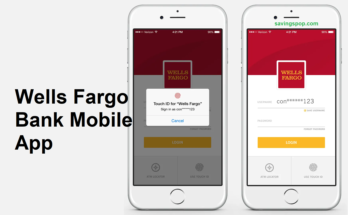How to apply for a personal loan at a bank, starts with the aid of learning and evaluating mortgage options to find the best terms. Gather required documents, including evidence of earnings, identity, and financial institution statements. Visit the bank individually or observe online through their website. Fill out the software form as it should be, offering all necessary data.
Submit the finished application at the side of the specified files. The bank will evaluate your software, take a look at your credit rating, and assess your economic scenario. If authorized, you’ll obtain the mortgage amount on your financial institution account. Ensure to recognize the repayment phrases and situations earlier than accepting the loan.
How to Apply For a Personal Loan at a Bank
What is a Personal Loan?
A non-public mortgage is a fixed amount borrowed from a financial institution or financial institution. You agree to repay this quantity in everyday installments over a precise duration, commonly one to seven years. The mortgage quantity, hobby price, and reimbursement phrases are decided based totally on your creditworthiness and financial scenario.
Types of Personal Loans
- Secured vs. Unsecured Loans
- Secured Loans: These loans require collateral. Collateral is an asset you pledge to the lender, inclusive of your car or domestic. If you fail to pay off the mortgage, the lender can seize the collateral to recover the mortgage amount. Secured loans typically have lower interest rates because they pose less risk to lenders.
- Unsecured Loans: These loans do now not require collateral. Instead, they are primarily based on your creditworthiness, profits, and overall financial health. Unsecured loans generally have higher hobby prices than secured ones due to the fact they represent a higher danger for lenders.
- Fixed vs. Variable Interest Rates
- Fixed Rates: With a set interest price, the charge remains consistent at some point in the existence of the mortgage. In this manner your monthly payments may be predictable and solid, making it less difficult to finance.
- Variable Rates: Variable interest quotes range primarily based on market conditions. With this method your monthly bills can change through the years, which might also cause decreased rates at some stage in favorable economic situations but additionally, better quotes if the market adjusts unfavorably.
Also Read: CitiBank Mobile App
Typical Uses for Personal Loans
Personal loans can serve a variety of objectives. Some common uses include:
- Debt Consolidation: Combining multiple money owed into an unmarried loan with a decreased hobby price. This can simplify your budget and decrease your overall hobby payments.
- Major Purchases: Financing sizable fees like domestic home equipment, furnishings, or a brand new car.
- Medical Expenses: Covering sudden scientific payments that aren’t blanketed with the aid of coverage.
- Home Improvements: Funding renovations or maintenance to boost the price of your private home.
- Vacations: Paying for travel or entertainment sports which you won’t be able to afford in any other case.
Preparing to Apply
Assessing Your Financial Situation
Before applying for a personal loan, it’s important to understand your financial situation. This involves several steps:
- Reviewing Income: Look at your month-to-month earnings from all resources, together with salary, bonuses, and any aspect of jobs. This will assist you decide how a great deal you may come up with the money to borrow and repay.
- Evaluating Expenses: Make a listing of your month-to-month prices, inclusive of rent or mortgage, utilities, groceries, and transportation. This will give you a clear picture of your financial obligations and what kind of you have left over for loan repayments.
- Checking Your Credit Score: Your credit score score is a key element in determining your loan eligibility and interest rate. You can gain a loose credit document from predominant credit bureaus like Experian, Equifax, and TransUnion. Review your report for accuracy and take steps to enhance your score if needed.
Determining the Loan Amount Needed
To figure out how much you need to borrow:
- Listing Expenses: Identify all of the fees you want to cover with the loan. This could encompass consolidating current debt, creating a big purchase, or overlaying emergency expenses.
- Calculating Total Amount: Add up those charges to decide the entire mortgage amount you want.
- Considering Additional Costs: Factors in any extra costs associated with the mortgage, along with application prices or hobby, to make sure you borrow enough to cover all charges.
Understanding Your Credit Score
It’s calculated primarily based on your credit score records, such as:
- Payment History: Your tune document of paying payments on time.
- Credit Utilization: The quantity of credit score you’re the use of compared to your overall available credit.
- Length of Credit History: How long you’ve had credit score debts.
- Types of Credit Accounts: The unique sorts of credit bills you have, along with credit cards, mortgages, and loans.
- Recent Inquiries: Recent credit applications.
A higher credit score score normally means better loan phrases, including decreased hobby quotes. If your score is low, take into account enhancing it earlier than applying for a mortgage via paying down debt, making timely bills, and correcting any mistakes in your credit score document.
Gathering Required Documentation
When applying for a personal loan, you’ll need to provide several documents to support your application. Commonly required documents include:
- Identification: A government-issued ID including a motive force’s license, passport, or country-wide ID card.
- Proof of Income: Recent pay stubs, tax returns, or financial institution statements showing your profits. Self-employed people may additionally want to offer extra documentation including enterprise tax returns.
- Proof of Address: Documents inclusive of application bills, hire agreements, or financial institution statements that display your contemporary deal.
- Credit History: Your credit score record, which the lender may pull directly from credit score bureaus.
Researching Banks and Loan Options
Choosing the Right Bank
When selecting a bank for your loan, consider the following factors:
- Reputation: Research the financial institution’s popularity for customer service and loan management. Look for opinions and scores from different customers.
- Loan Terms: Compare the terms supplied by using one-of-a-kind banks, consisting of hobby costs, charges, and reimbursement options.
- Customer Reviews: Read opinions from other customers to gauge their reports on the financial institution’s mortgage process and customer support.
Comparing Loan Products
Not all personal loans are created equal. When comparing loan products, consider:
- Interest Rates: Look for the lowest possible interest rate, as this will affect your overall cost. Compare both fixed and variable rates.
- Fees: Be privy to any costs related to the loan, together with application prices, origination costs, or prepayment consequences. Some banks may also offer loans with no charges.
- Repayment Terms: Review the duration of the mortgage and the amount of each month-to-month fee. Longer repayment phrases may additionally reduce your monthly bills but can boost the whole interest paid over the existence of the mortgage.
Online vs. Traditional Banks
- Online Banks: These often provide an extra streamlined application manner and competitive quotes because of decreased overhead prices. They may also provide brief approval and disbursement times but may additionally lack the personal touch of conventional banks.
- Traditional Banks: These provide face-to-face service and personalized recommendations. While they may have higher expenses or interest costs, they can provide a more private enjoyment and assist throughout the loan process.
The Application Process
Step-by-Step Application Guide
- Online Application:
- Visit the Bank’s Website: Navigate to the loan phase of the financial institution’s internet site.
- Fill Out the Application Form: Enter your non-public and economic records, which include information about your profits, fees, and employment.
- Submit Required Documents: Upload the essential documents, inclusive of ID, evidence of profits, and proof of deal. Make certain all files are clear and whole.
- In-Person Application:
- Visit a Bank Branch: Go to a neighborhood department of the bank where you want to apply.
- Speak with a Loan Officer: Discuss your needs with a loan officer who can guide you through the method and solve any questions.
- Complete the Application Form: Fill out the utility with the assistance of the loan officer if wanted.
Filling Out the Application
Key sections of the application include:
- Personal Information: Include your full call, deal with, social security variety, and speak to information.
- Employment Information: Provide information about your modern organization, process identity, and income.
- Financial Information: Include statistics about your assets, liabilities, and monthly costs. This allows the lender to check your capacity to pay off the loan.
Submitting Required Documents
To avoid delays in processing, ensure that you provide all needed papers:
- Ensure Accuracy: Double-check that each statistic at the utility shape is accurate and complete.
- Verify Document Quality: Make positive files are legible and up-to-date. Poor-fine scans or pics can cause delays.
Approval and Loan Terms
Understanding Loan Approval
Loan approval depends on several factors, including:
- Credit Score: A higher rating improves your chances of approval and might result in better terms.
Income: Lenders want to make sure you’ve got sufficient earnings to make ordinary payments. - Debt-to-Income Ratio: This ratio compares your month-to-month debt bills to your month-to-month income. A lower ratio shows higher economic health and may enhance your chances of approval.
Reviewing Loan Terms
Once approved, review the loan terms carefully:
- Interest Rate: Confirm whether the rate is fixed or variable and understand how it affects your monthly payments.
- Repayment Schedule: Verify the length of the loan and the frequency of payments. Ensure the payment amounts are manageable within your budget.
- Fees & Charges: Check for any additional fees, such as late payment fees or prepayment penalties.
Accepting the Loan Offer
If you agree to the terms, you’ll need to sign a loan agreement. This contract outlines all the terms and conditions of the loan, including:
- Loan Amount: The overall amount you’re borrowing.
- Interest Rate: The price at which interest will accrue.
- Repayment Schedule: The timeline for making payments and the quantity of each payment.
- Fees: Any fees related to the loan.
Managing Your Loan
Making Payments
Once you receive your loan, managing payments effectively is crucial:
- Set Up Automatic Payments: Consider setting up automated bills to make certain you by no means miss a due date. This can assist avoid late expenses and harm on your credit score score.
- Budget for Payments: Include loan bills for your month-to-month price range to make sure you have enough funds set aside.
Handling Loan Issues
If you encounter problems with your loan:
- Contact Your Lender: Reach out to your lender as soon as possible if you’re having trouble making payments. They may provide solutions like postponement or a modified payment schedule.
- Explore Assistance Programs: Some lenders offer assistance programs for borrowers facing financial hardship. Inquire about any available options.
Paying Off the Loan Early
Paying off your debt early can save you money in interest:
- Check for Prepayment Penalties: Some loans have consequences for paying off the loan early. Review your mortgage agreement to recognize any capacity penalties.
- Make Extra Payments: Consider making greater payments each time viable to reduce the most important stability and overall hobby paid.
Conclusion
Summary of Key Points
How to apply for a personal loan at a bank:
- Understand Personal Loans: Know the sorts, uses, and phrases of private loans.
- Prepare Thoroughly: Assess your economic state of affairs, determine the loan quantity wished, and gather the necessary documentation.
- Research and Compare: Choose the right bank and mortgage product by way of evaluating interest fees, costs, and phrases.
- Follow the Application Process: Whether making use of online or in-character, whole your application accurately and put up all required files.
- Manage Your Loan: Make well-timed bills, handle any troubles promptly, and do not forget to pay off the mortgage early to store on interest.
Final Thoughts
Applying for a private loan may be a smooth and rewarding revel if you approach it with cautious training and information. By following the steps mentioned in this manual, you’ll be nicely prepared to secure a private mortgage that meets your monetary wishes and goals.
Additional Resources
- Loan Calculators: Use online calculators to estimate month-to-month payments and general interest fees.
- Credit Score Checkers: Monitor your credit score score and report via free offerings or credit bureaus.
- Financial Planning Guides: Read up on debt control, improving credit rankings, and powerful financial planning strategies.




